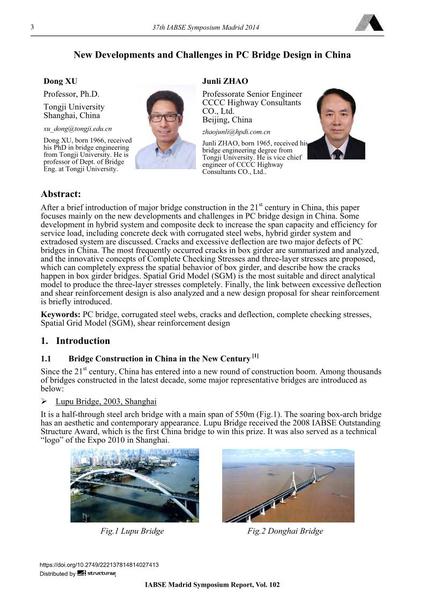New Developments and Challenges in PC Bridge Design in China

|
|
|||||||||||
Détails bibliographiques
| Auteur(s): |
Dong Xu
Junli Zhao |
||||
|---|---|---|---|---|---|
| Médium: | papier de conférence | ||||
| Langue(s): | anglais | ||||
| Conférence: | IABSE Symposium: Engineering for Progress, Nature and People, Madrid, Spain, 3-5 September 2014 | ||||
| Publié dans: | IABSE Symposium Madrid 2014 | ||||
|
|||||
| Page(s): | 3-15 | ||||
| Nombre total de pages (du PDF): | 13 | ||||
| Année: | 2014 | ||||
| DOI: | 10.2749/222137814814027413 | ||||
| Abstrait: |
After a brief introduction of major bridge construction in the 21st century in China, this paper focuses mainly on the new developments and challenges in PC bridge design in China. Some development in hybrid system and composite deck to increase the span capacity and efficiency for service load, including concrete deck with corrugated steel webs, hybrid girder system and extradosed system are discussed. Cracks and excessive deflection are two major defects of PC bridges in China. The most frequently occurred cracks in box girder are summarized and analyzed, and the innovative concepts of Complete Checking Stresses and three-layer stresses are proposed, which can completely express the spatial behavior of box girder, and describe how the cracks happen in box girder bridges. Spatial Grid Model (SGM) is the most suitable and direct analytical model to produce the three-layer stresses completely. Finally, the link between excessive deflection and shear reinforcement design is also analyzed and a new design proposal for shear reinforcement is briefly introduced. |
||||
